On the Stewardship of Orbits
By Jon Engelsman
November 21, 2018
The technical and regulatory efforts involved in mitigating the growing danger of space debris.
 Illustration by David Simonds
Illustration by David Simonds
On October 4th 1957, Russia’s Sputnik 1 shot across the night sky to become the world’s first artificial satellite. While many people reported seeing a shiny glimpse of the new satellite, in fact what they saw was the shiny body of the R-7 rocket that had launched Sputnik 1 from the Baikonur Cosmodrome, trailing behind the satellite on its journey across the sky. This rocket body would soon become known as 1957-001A (catalog number 00001) and, more importantly, the world’s first piece of orbital debris.
Sixty years later, some 1,900 working satellites race around the Earth at all times, beaming Internet and television signals into our homes and guiding us to our destinations through the GPS in our mobile devices. But this expansion out into the frontier of space has brought with it an even more significant rise in the amount of orbital debris around our planet.
From disabled satellites to the free-floating nuts and bolts that once held them together, orbital debris poses a serious risk not only to our existing space-based infrastructure but also to an unprecedented growth in satellite numbers that looms on the horizon. And the challenge of dealing with this risk will require a global coordination between government and commercial entities to make sure humankind maintains a safe and open access to outer space.
A Very Rapid Unscheduled Disassembly
According to the Orbital Debris Program Office at NASA’s Johnson Space Center, orbital debris by definition “are all man-made objects in orbit about the Earth which no longer serve a useful purpose.” Typically categorized by size, it’s estimated that there are over 21,000 pieces of orbital debris larger than 10 cm (roughly the size of a grapefruit), which would include complete satellites and rocket stages as well as larger pieces of debris. Smaller debris between 1 and 10 cm is estimated to number over 500,000 pieces (with over 100 million pieces smaller than 1 cm) and would include everything from hardware components down to specks of paint.
By definition, objects only become orbital debris once they no longer serve a purpose. With satellites, this can include situations where a satellite either failed to launch into the proper orbit, became disabled while in orbit, or was intentionally decommissioned by its operator after exceeding its operational life, among other situations. And with rockets, this typically occurs when components from the various stages of a rocket launch were discarded in flight while high enough and fast enough to reach orbital velocity along with the satellite that was being delivered.
Additionally, orbital debris is created when these satellite or rocket components catastrophically fail, typically due to explosions of residual propellants or pressurized fluids in fuel tanks and control lines. Prior to 2007, the majority of orbital debris in space was due to these types of events.
Orbital debris can also occur when satellites are intentionally destroyed. Anti-satellite (ASAT) weapons have been tested on satellites in orbit by a small handful of countries around the world. In 1985, the United States tested the first ASAT weapon when an F-15 fighter jet launched an ASM-135 missile and destroyed an obsolete Solwind P78-1 solar satellite orbiting at an altitude of 345 miles above the Earth. According to observations by NASA and the U.S. military, this test resulted in almost 300 pieces of orbital debris that were estimated to take over 19 years to re-enter Earth’s atmosphere.
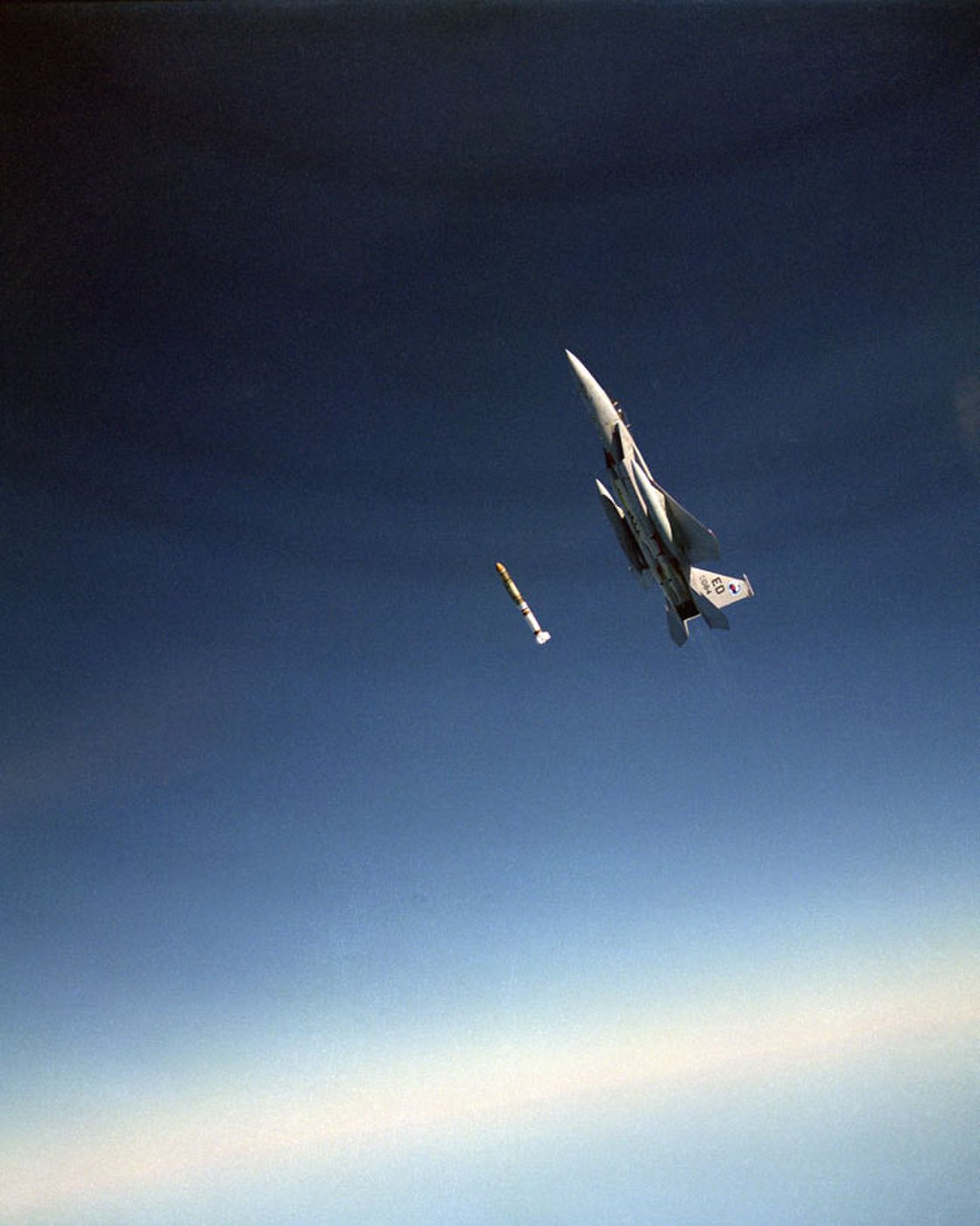 AVGeekery
AVGeekery
A later U.S. test of ASAT technology in 2008, nicknamed Operation Burnt Frost, added more orbital debris when an SM-3 missile was launched from the guided-missile cruiser USS Lake Erie, destroying an inoperable National Reconnaissance Office (NRO) spy satellite and adding over 150 pieces of debris that would take 18 months to de-orbit.
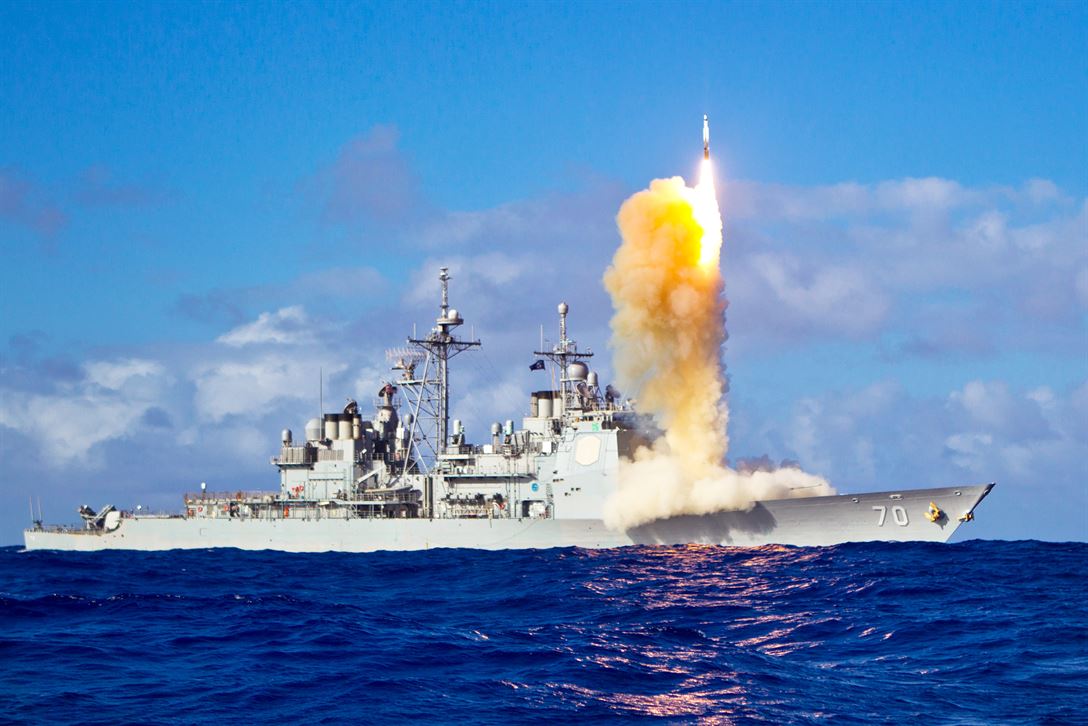 US Department of Defense
US Department of Defense
But other ASAT tests have contributed much more significantly to orbital debris. In 2007, the Chinese government launched a land-based ASAT missile and destroyed one of their own retired weather satellites in Low-Earth Orbit. This test created over 3,000 pieces of orbital debris, causing an international outcry due to the serious risk that the new debris posed to the orbital assets of the international community.
Yet another source of orbital debris is caused by collisions in space, either between satellites or from orbital debris. In 2009, the inactive Russian communication satellite Cosmos 2251 collided with a commercial U.S. satellite operated by Iridium Satellite LLC. The collision occurred at an orbital altitude of almost 500 miles and produced almost 2,000 pieces of debris.
While anti-satellite tests and collisions are still somewhat rare, the likelihood of these events continues to increase as more satellites are launched and more debris is created. And between the 2007 Chinese ASAT test and the 2009 American-Russian satellite collision, the resulting debris from these events now represents almost one-third of all larger orbital debris in Earth orbit.
Float Like a Butterfly, Sting Like a Bee
Traveling over seven times faster than a speeding bullet, the kinetic energy of a small piece of orbital debris can cause serious damage when it hits a spacecraft. Our best understanding of its impact has come from examining the spacecraft which have had the most direct human attention, namely the Space Shuttle, the International Space Station and the Hubble Space Telescope. All three spacecraft have experienced some type of orbital debris impact with varying degrees of damage.
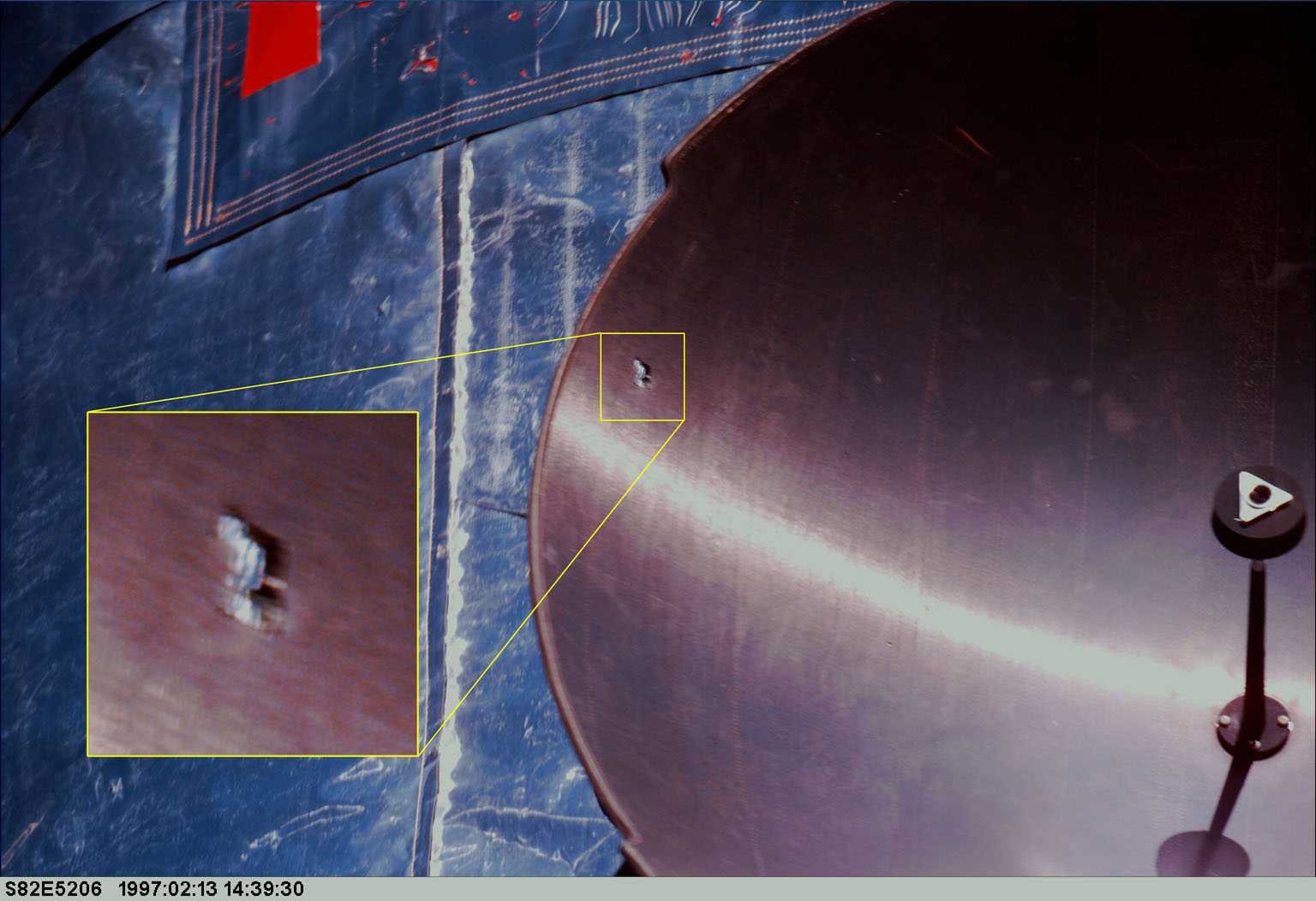 NASA/Johnson Space Center
NASA/Johnson Space Center
While it’s difficult to estimate the rate at which various spacecraft experience minor or even severe damage from orbital debris impacts, we know that it’s likely happening on a regular basis. Debris impacts can damage critical components on spacecraft, from the solar panels that provide power to the antennas that receive commands from Earth. And even more severe impacts can catastrophically destroy satellites, breaking them up into new pieces of orbital debris.
It’s this debris-begets-debris effect that is one of the largest inherent dangers of orbital debris. The Kessler Syndrome, a theory proposed by NASA’s Donald Kessler in 1978, describes the self-sustaining cascade effect that would occur when orbital debris hits a satellite, creating even more debris and setting off a chain reaction of debris and satellite collisions. Although best popularized by the 2013 film Gravity, the cascading effect of the Kessler Syndrome wouldn’t necessarily occur over a short, action-packed 2 hour span of satellites careening into each other. Instead, it’s likely happening right now, spread out over years and decades. The orbital debris created by China’s 2007 ASAT test and the 2009 satellite collision could have been the start of a cascade that will continue to accelerate, a slow burn of ever more orbital debris and satellite collisions.
It should also be noted however that orbital debris is falling back to Earth every day, with small pieces often burning up in the atmosphere and larger pieces sometimes surviving the heat of reentry to fall into the vast expanse of ocean, all with little fanfare. The first piece of orbital debris from the Sputnik 1 launch fell back to Earth within a couple of months, whereas most orbital debris will stay in space for decades if not thousands of years after it is created.
But orbital debris is now a hazard of space like any other, taking its place alongside environmental risks like temperature extremes, empty vacuums and radiation exposure. This hazard affects every operational spacecraft in orbit around the Earth, from the International Space Station to the constellations of satellites that provide key infrastructure in the modern age, including GPS, weather observations, communications and military intelligence. It also poses a risk to spacecraft trying leave Earth’s orbit, those unmanned scientific explorers destined for other planets and celestial bodies in our solar system. For those spacecraft, even leaving Earth’s orbit requires detailed launch timing to avoid known clusters of orbital debris that could destroy a spacecraft’s scientific voyage before it had a chance to begin.
We’re Going to Need a Bigger Orbit
Of the roughly 1,900 satellites currently in orbit around the Earth, more than 60% occupy a region of space closest to the Earth known as Low-Earth Orbit (LEO). Due to increasingly lowered costs of satellites and launch platforms, this region of space has become increasingly crowded with the rise of smaller and smaller satellites, known as smallsats. In the five years between 2012 and 2017, over 1,000 smallsats were launched into space according to the analytic firm Bryce Space & Technology, the majority of which were launched by commercial enterprises like the remote-sensing startups Planet and Spire. Planet alone, as a commercial company, now operates a fleet of over 175 imaging satellites, the largest satellite constellation in history.
Other companies like SpaceX and OneWeb are in development of “mega constellations” numbering upwards of thousands of small satellites that will provide broadband internet access to customers all around the globe. These large constellations are reminiscent of the model pioneered by Iridium back in the late 1990’s, then a Motorola-funded venture providing global “satphone” communications.
 Iridium
Iridium
But whereas Iridium broke new ground in the 1990’s with its constellation of only 66 satellites, SpaceX has received FCC approval for over 7,500 satellites for its “Starlink” mega constellation, while OneWeb has looked for approval of almost 2,000 satellites for its own broadband internet satellites.
No longer simply the domain of governmental agencies, the space around Earth is becoming increasingly crowded with fleets of satellites operated by commercial companies. And with the rapid rise of mega constellations looming on the horizon, the coordination that is needed to address and mitigate the risk of orbital debris to all spacecraft will soon increasingly rely on a combined effort of commercial and government cooperation.
How to Be a Good Steward
As the space community aims to address the risk of orbital debris, there are number of different approaches being used to mitigate such risks. One effort is studying the effect of debris impacts and ways to shield spacecraft against such damage. Another involves monitoring debris in orbit to provide advanced warnings about possible collisions. One lofty approach is to actively remove debris that’s already in space using essentially garbage collecting spacecraft. And finally, regulations and guidelines for both government and commercial spacecraft operators aim to minimize the risk of creating more orbital debris.
That’s Going to Leave a Mark
Understanding what happens when a spacecraft is hit by orbital debris can help engineers develop new methods to shield against such impacts. But our ability to gather forensic evidence from orbiting spacecraft, destroyed or otherwise damaged by debris, is unfortunately quite limited. While evidence of orbital debris impacts from the Space Shuttle, the ISS and Hubble have been studied in the past, scientists can also simulate such collisions on Earth using special guns that accelerate projectiles up to orbital velocity. NASA’s Hypervelocity Impact Technology (HVIT) program performs such research to study impact physics and test out potential shielding techniques to protect spacecraft.
 NASA/JSC/Astromaterials Research & Exploration Space
NASA/JSC/Astromaterials Research & Exploration Space
Keep Your Eye on the Ball
While it’s important to know what happens when debris hits a spacecraft, a better situation would be for a spacecraft to avoid getting hit in the first place. But spacecraft operators need to know where the debris is in space in order to avoid it. To do this, they rely on the detailed surveillance of spacecraft and debris through networks of land-based optical telescopes and radar systems, one of which is the Space Surveillance Network (SSN) managed by the U.S. Air Force.
 NASA/JSC/Orbital Debris Program Office
NASA/JSC/Orbital Debris Program Office
One of the primary users of the SSN is the Air Force’s Combined Space Operations Center (CSpOC, formerly the Joint Space Operations Command) out of Vandenberg Air Force Base, tasked with providing situational awareness and security for military assets in space. But the CSpOC also plays a pivotal role for non-military spacecraft as well, coordinating closely with NASA and commercial satellite operators to issue “conjunction alerts” when there are risks of satellite collisions or debris impacts.
Historically, the surveillance of space debris required significant investment in complicated and experience infrastructure, previously only by feasible through government and military funding. However, the 2016 startup company Leo Labs has been developing a commercial offering for debris tracking through a global network of phased array radar systems, monitoring debris in Low-Earth Orbit and providing data services to satellite operators.
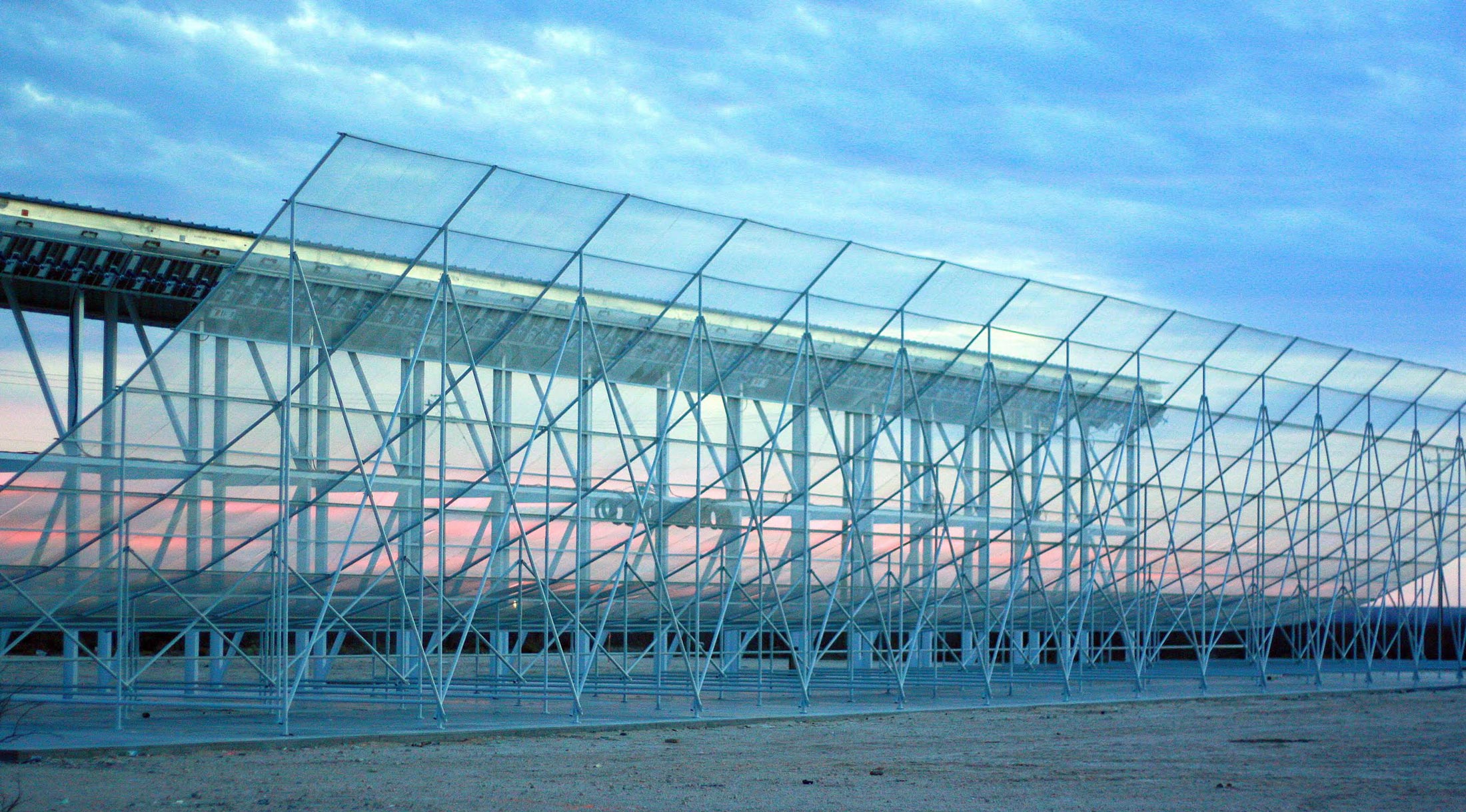 Leo Labs
Leo Labs
For commercial operators like Planet, these commercial services offer new opportunities to ensure the safety of their growing satellite fleet. Whereas single, large spacecraft like the International Space Station can be manually tracked and commanded to maneuver out of the way of debris, large constellations need more autonomous solutions to handle the hundreds and soon thousands of satellites controlled by any one operator. As one example of integrated commercial and government capabilities, Planet and Leo Labs have been incorporating commercial debris tracking capabilities, combined with data from the CSpOC, into a debris and collision warning system with automated commands sent to satellites for avoidance maneuvering.
Taking Out the Trash
Actively removing debris from orbit is a more proactive, if not practically difficult, approach to dealing with orbital debris. While some debris will fall out of orbit (due to the faint atmospheric drag) and burn up on its own, the majority of debris will continue to orbit the Earth for many years after it’s created. The challenge of actively removing debris is finding practical and cost-effective ways to manipulate the orbits of debris, pushing them down into orbits low enough that they reenter or burn up in the Earth’s atmosphere.
Most proposals for active debris removal involve launching satellites with unique designs specifically suited for physically gathering and maneuvering debris in orbit. Some proposals use large tethers propelled by the magnetic fields around the Earth, wrapping up debris and dragging down into lower orbits. Other techniques include small satellites that use nets and harpoons to gather larger debris and use their own rocket engines to push debris down into lower orbits. A recent example of this kind of technology is the RemoveDEBRIS satellite, designed by the Surrey Space Centre at the University of Surrey in the UK. This technology demonstrator satellite launched in early 2018 and has recently completed initial tests of netting a small cubesat in orbit.
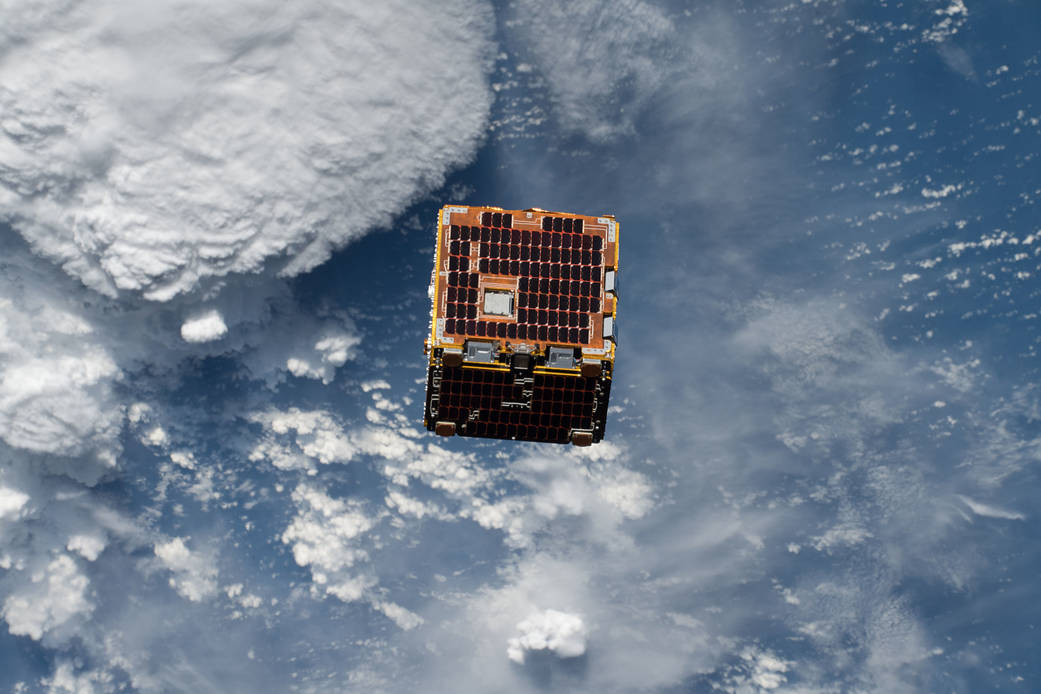 NASA
NASA
While many technology concepts have been proposed for active debris removal, there is no practical solution that has yet been deployed at a large scale to date. For now, most concepts tend to involve the tug boat concept, either pushing orbital debris up into different orbits out of the way into little used regions of space, or down into orbits low enough where debris will quickly burn up on reentry into the atmosphere. However, this process can be somewhat impractical, as it often involves the debris removal satellite burning up as well, since changing orbits is a very fuel-intensive process. For now, new technologies remain to be developed that could be deployed on a large, timely and cost-effective scale to remove orbital debris as fast as it is currently being created.
The Role of Regulations
Other than removing debris that already exists, another way to mitigate the growing risk of orbital debris is to try and limit its creation in the first place. A number of government regulations currently exist that try and provide guidelines for satellite operators, both government and commercial, that would help limit the creation of new orbital debris. For U.S.-based operators, approval to communicate with satellite fleets is granted the Federal Communication Commission (FCC), which also includes guidelines and requirements for the appropriate disposal of the satellites at the end of their operational life.
Following recommendations by NASA and international partners, this disposal guideline typically requires that operators de-orbit satellites within 25 years of launch. But this requirement is not only difficult to enforce but is quickly becoming outdated as the number and frequency of satellites launched into orbit continues to grow. And with the rapid pace of development in commercial satellite operators, there is a concern that the [FCC isn’t appropriately equipped](FCC moves forward with orbital debris reform amid soul-searching about its responsibilities) as a government agency to handle these types of issues.
But the impacts of space debris, orbiting the entire Earth every 90 minutes, are problems faced by every country and commercial entity that operate spacecraft in Earth orbit. Efforts like the Inter-Agency Space Debris Coordination Committee (IADC) and the International Organization for Standardization (ISO) standard 24113:2011 provide frameworks for coordinating orbital debris management, drawing from the technical expertise and capabilities of academics, industry experts and government officials. But it’s clear that there’s a growing need for more international coordination between government, military and commercial spacecraft operators as they try to manage the growing risks of orbital debris.
A Shiny Warning Sign
Looking to the stars in 1957, people wrongfully assumed the shiny glare they saw traveling across the sky was Sputnik 1. But that glare was actually the world’s first warning sign of the risk of orbital debris, ignored as it was at the time. This risk has only continued to get worse with humanity’s growing expansion into Earth’s orbit. The scenario described by the Kessler Syndrome in 1978 was an early warning sign, but it was the wake-up call of China’s anti-satellite test in 2007 and the Russian satellite collision in 2009 that brought to the public eye the clear and present danger of orbital debris.
In this period of unprecedented growth in space, commercial satellite operators are poised to be the driving factor in one of the largest growths of satellite deployments (and possibly orbital debris) in history. It remains to be seen what coordinated efforts of orbital debris mitigation will evolve between government, military and commercial operators, anything from new shielding techniques and more advanced monitoring to debris removal efforts and regulation of orbital operations. It’s in everyone’s best interest, from satellite operators to the societies that increasingly depend upon space-based infrastructure, to heed the warning of the Kessler Syndrome before Earth’s orbit becomes a graveyard of humanity’s dreams in space.
Additional Reading
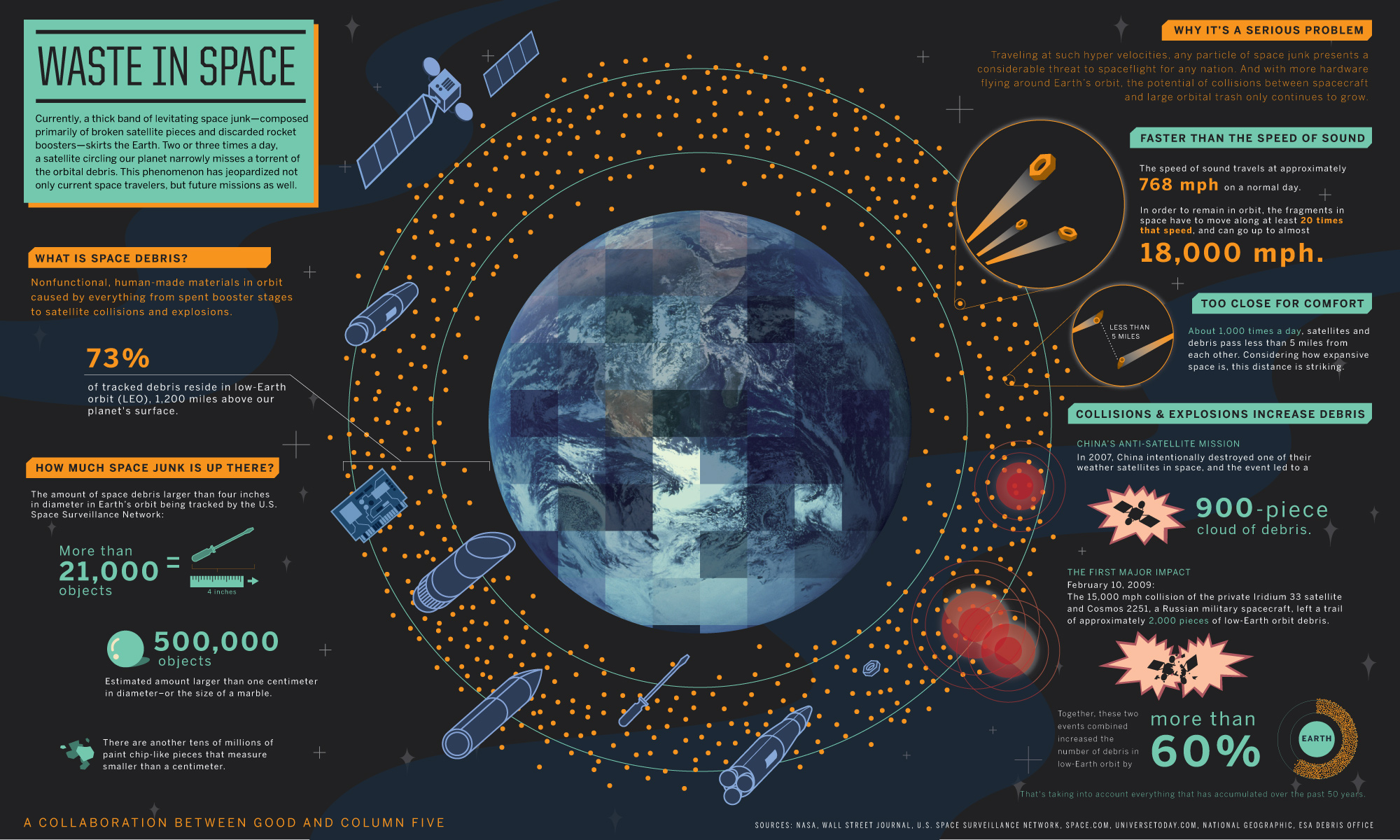 NASA/JPL
NASA/JPL
Megaconstellations & Debris
-
SpaceX’s plan to beam down internet from space comes with a big debris problem [Link]
-
Will megaconstellations cause a dangerous spike in orbital debris? [Link]
-
AS SATELLITE CONSTELLATIONS GROW LARGER, NASA IS WORRIED ABOUT ORBITAL DEBRIS [Link]
-
Rise of the megaconstellations breathes life into active debris removal schemes [Link]
-
Mega-constellations and mega-debris [Link]
NASA & ESA
-
NASA Orbital Debris Program Office [Link]
-
NASA-STD-8719.14 Process for Limiting Orbital Debris [Link]
-
ESA’s Annual Space Environment Report 2018 [Link]
-
Space debris must be removed from orbit says ESA [Link]
Orbital Debris
-
DANGER: ORBITAL DEBRIS [Link]
-
Space Junk: Tracking & Removing Orbital Debris [Link]
-
Orbital Debris: A Chronology (1999) [Link]
-
A Concept For Elimination Of Small Orbital Debris [Link]
US & International Guidelines
-
Inter-Agency Space Debris Coordination Committee (IADC) [Link]
-
U.S. Government Orbital Debris Mitigation Standard Practices [Link]
-
NPR 8715.6B, NASA Procedural Requirements for Limiting Orbital Debris and Evaluating the Meteoroid and Orbital Debris Environments [Link]
-
FCC 18-159 Mitigation of Orbital Debris in the New Space Age [Link]
-
Space situational awareness experts urge Russia to join orbital neighborhood watch [Link]
US Military
-
Combined Space Operations Center established at Vandenberg AFB [Link]
-
Beware the situation: how JSpOC tracks space debris [Link]
- Posted on:
- November 21, 2018
- Length:
- 16 minute read, 3209 words
- See Also: